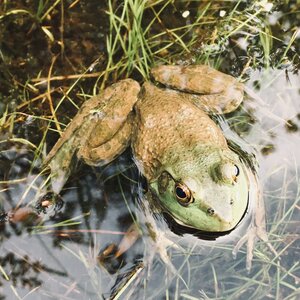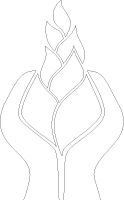This fall looks a lot different than anyone could have anticipated. Many parents are finding themselves in the position of deciding to keep their children at home and figuring out what that might look like. Many teachers are finding themselves in the position of trying to “teach” in the midst of restrictive protocols and increased anxiety all around.
Regardless of whether you are navigating “teaching” at school or at home, I’d like to suggest a few developmental reminders to keep things in perspective.
But first, a story about frogs and ferns. Sometimes lessons come from unusual places. This one comes from Aunt Ruth …
In my world, this pandemic brought many changes – one of the more welcome ones was having my sister and her two boys move in for awhile. This was a hard transition, not so much for my sister, but her 7-year-old experienced quite a bit of resistance. He found the city streets and the bright lights comforting. I live in the country, where the wandering elk regularly eat the compost and wildflowers grow wherever they please. My nephew found this unsettling at first. And very unknown.

Young William liked order. And knowing what to expect. My house was odd, with cold floors. The yards and fields were unruly and he missed the cars and the traffic (unlike his Aunt Ruth who fled the city years ago and loved walking the forest trail beside her house.) But it wasn’t home. And he didn’t feel at home. That is, not until he met the frogs.
We met Ted first, down by the lake. I was introducing William to my bench, the place I liked to sit and observe – well, more like “take part in” – the world around me. The playful otter, the diving osprey, the shy beaver, the crazy crayfish, the brazen damselflies that rested on my Cowichan sweater. William happened to move in during frog season. We spotted one and I gave it a name – Ted.
William had never thought of being able to name the things around him, while I never questioned it at all. Naming, whether animals, plants or feelings, helps us feel more connected. (Even the giant spider in my bathtub has a name. Somehow calling him Harold makes him seem friendlier and less scary. But back to William.) This simple act opened up a whole new world! It opened his eyes and his heart to the world around him. Somehow I had given him permission to interact with the local plants and critters in a whole new way.
William started visiting the lake more often. He found more frogs and he named them all. One of them, Fred, didn’t jump away but stayed close and held his ground. We weren’t sure if he liked the company or if he perhaps had a few things not quite right with his head. Either way, William felt at home with Fred and Fred with William. His alarm started to come down. (William’s that is, although I suppose Fred’s did too.) He even started to explore the far corners of the field on his own. He started asking questions. He drew maps and plant guides to make sense of his surroundings. Our forest trail became the “avenue of ferns” and the “aisle of skunk cabbage” and sometimes the “way of the slugs”.
There are a few stories in his experiences yet to be told, but the piece that feels important here is that William started to make a connection to the world around him in a way he hadn’t experienced before. That connection provided fertile ground for learning to take place. Through his experience he developed a particular curiosity about ferns. He now knows more about ferns that I do (or would ever want to!) – the types, how they grow, where they grow, whether you can eat them. Nobody taught him all that directly. (Although I did tell him the story about how his mother used to eat ferns when she was little. It explains so much.) He learned because he wanted to know more, and he knew who to go to for answers – in this case his fellow fern-loving older cousin.
He developed a love of frogs and ferns because he connected with the world around him. And because I introduced him to Ted.
The connection to the world around him also brought him closer to his inner world. It took some time, but Fred was an unwitting catalyst for the tears that needed to be shed about all the things he had left behind. Or maybe Fred knows the part he played – it’s hard to tell. But whether Fred was intentional or not, it happened. The guard was let down because William felt safe. It happened when Fred disappeared for awhile, causing great concern. In missing Fred, it made room for him to miss his home and his father and the busy streets he knew so well.
William needed to feel that sadness and the disappointment and the futility of not being able to control his world. We all do actually. It keeps us human. It helps us not only stay connected to our own inner world, but to those around us.
Now, as young William prepares to move to a new home with more busy streets, I hope he takes with him his passion for frogs and ferns – that he keeps connected with the world around him and with the emotions that get stirred up within him (even the uncomfortable ones).
This is where the true learning and true growth happens … where you least expect it.
Warmly … Aunt Ruth
And so back to those reminders …
For a child to be RECEPTIVE to learning, this works best in the play or exploration mode – that is, where they have room to explore and be curious without the pressure of an outcome or performance.
For a child to be in the EXPLORATION mode, this works best when they feel safe – that is, where they do not feel alarmed or anxious (about the learning or the circumstances around it).
For a child to feel SAFE, it works best when they feel at home – that is, when they feel connected and cared for by the adults (and frogs) in their world (parents, teachers, and other supporting cast), and when they feel connected to their own feelings through experiences that foster connection to their inner world.
With these conditions in place, there is no telling what kind of fruit may grow.
Tamara will join Gordon Neufeld in presenting The Saturday Seminar on Home Education on October 24, 2020. For more information CLICK HERE.
